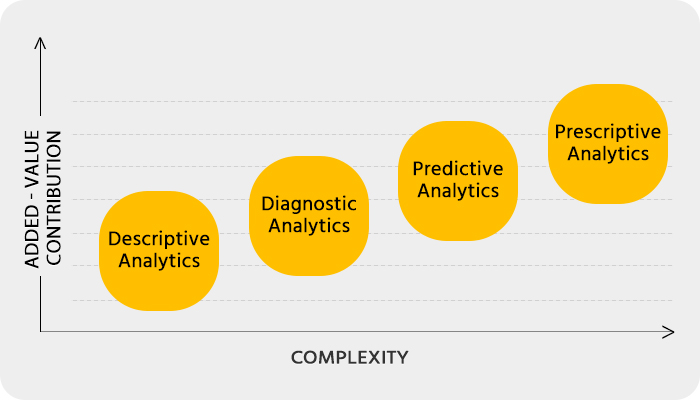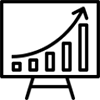Product & Services

Descriptive analytics
Descriptive analytics answers the question of what happened. Descriptive analytics juggles raw data from multiple data sources to give valuable insights into the past. However, these findings simply signal that something is wrong or right, without explaining why. For this reason, highly data-driven companies do not content themselves with descriptive analytics only and prefer combining it with other types of data analytics.

Diagnostic analytics
At this stage, historical data can be measured against other data to answer the question of why something happened. Thanks to diagnostic analytics, there is a possibility to drill down, find out dependencies and identify patterns. Companies go for diagnostic analytics as it gives in-depth insights into a particular problem. At the same time, a company should have detailed information at their disposal otherwise data collection may turn out to be individual for every issue and time-consuming.

Predictive analytics
Predictive analytics tells what is likely to happen. It uses the findings of descriptive and diagnostic analytics to detect tendencies, clusters and exceptions, and to predict future trends, which makes it a valuable tool for forecasting. Despite numerous advantages that predictive analytics brings, it is essential to understand that forecasting is just an estimate, the accuracy of which highly depends on data quality and stability of the situation, so it requires careful treatment and continuous optimization.
Prescriptive analytics
The purpose of prescriptive analytics is to literally prescribe what action to take to eliminate a future problem or take full advantage of a promising trend. This state-of-the-art type of data analytics requires not only historical data but also external information due to the nature of statistical algorithms. Besides, prescriptive analytics uses advanced tools and technologies, like machine learning, business rules and algorithms, which makes it sophisticated to implement and manage.




